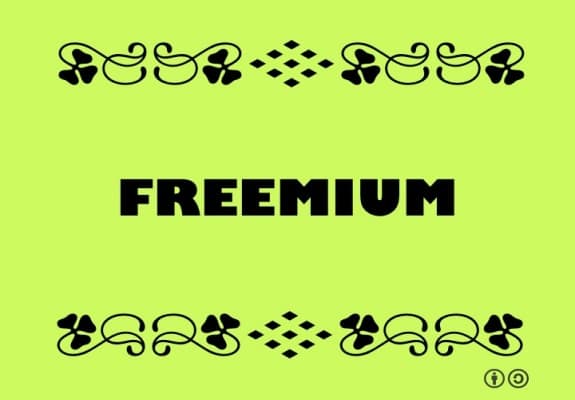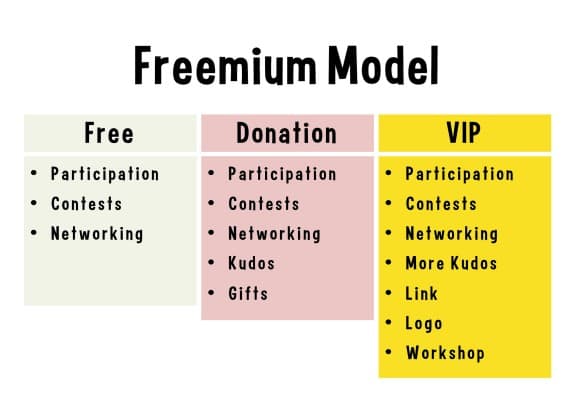Freemium vs. Paid: What is the Better Way to Sell Web Applications

There isn’t any rest for the business minded. Either you are looking for new customers or you are trying to better your product. If you developed an app a while ago and sold it for a decent revenue, then you definitely cannot use the same strategy to sell a different one this year. The strategies keep changing. What worked two years ago definitely is obsolete now.
Customers are more educated than ever, and you need to try a mix of traditional and new marketing tactics to beat the challenge. They need to know what they are getting into.
The two major ways to get your app shared with your customers would be to either give it FREE or put it up for PURCHASE. Or in other words, Freemium and Paid.
Freemium
Freemium is a combination of Free and Premium, where businesses release their apps freely the first time, and then encourage the users to buy certain features. They would then be able to access rich functionalities for a subscription fee. Delivering these free features is a potent marketing tool, and a great help if you are introducing a new kind of app. Freemium apps would help you scale your product to newer heights without expending resources on any elaborate or costly ad campaigns. The subscription fees you charge can be converted into a sustainable source of revenue.
Freemium option has proved to be more successful than the limited period free offers or free 30-day trial programs. This is probably because users do not like to be tied down by deadlines.
So, when launching your app in the app market, you would probably have the doubt that every product owner would be having – should it be free or paid? It could be a bit confusing, but it is a hurdle you’ve got to cross.
Here are some things to consider in order to make the decision easier for you:
Consider your market
So where are you planning to market your apps? Is it on the Android Play Store or iPhone App Store? The bottom line of this question is that Android users are less tolerant of paying to use an app when compared to iPhone users. Consider your market before planning the monetization strategy for your app.
What kind of app are you releasing
There are so many different kinds of apps, and each of them are viewed differently by the consumers. For example, users don’t mind a few in-app advertisements in their gaming apps, but that will not be the case with a business related app. The users would prefer a more professional kind of interface and performance in a business app. So you may not see much success with in-app purchases in that kind of app.
When you are testing your app among the users
If you are testing the waters, then you can first release it for free, and then convert it into the Freemium model. This is the most successful option among users because they can use the product without actually buying it, and then decide for themselves whether they actually need to buy it.
When you are on a lead nurturing process
If your main goal is to generate leads, then the Freemium model is the best option because you can actually discover what people like and dislike about your product, without having to conduct any elaborate marketing campaigns or surveys. Once the customer is sure that you will give value for the product, there is no doubt that they will buy it.
There are reasons why a “free app” would help your business.
- Leads – The best way to collect potential leads. True, you will get loads of people who are just trying your app for fun, but you will also most certainly get a good chunk of people who are really interested.
- It wouldn’t matter if your app has flaws – As users are not paying for using the app, they wouldn’t mind it being less than perfect. So if you are foraying into a new kind of app this time, it would be good to make it a free download. However, when you start charging for the download and usage, you cannot afford to have any kind of flaws in it.
- Chances for download are high – It is natural that free apps are the most downloaded ones as people are always willing to try new products as long as they don’t have to buy them.
Why Freemium may be suitable

A problem with free products is that the “engagement level” is too low. As there are a multitude of apps in the market, there are chances that your product will lie dormant before long. So if you are releasing a free product, make sure to follow it up with a paid version or a Freemium.
That way the level of competition will be very low. As long as you have a solid product that works almost as good as a paid version, people will be impressed and ready to buy.
It is advisable to go for the paid plan before the customer takes the features of the product for granted. Make the app in such a way that they don’t want to stop using the app anymore. Scale your product, add more interesting features, and sell it.
A Freemium version of your product will definitely have solid leads. That’s because people who have paid for the app are really interested in what you are offering, and they want more of it.
However, the engagement levels are pretty high and there is very less chance of the app lying dormant. As people are paying for the product, the chances for using it are comparatively higher.
Closing Thoughts
Free products are good for as long as you are trying to make a name for yourself in the market. But you cannot hold on to that, and make revenue in the long rrun. You will have to follow it up with in-app purchases or a Freemium version to overcome the threat of being dormant and forgotten. Paid versions also have better chances of securing loyal customers when compared to the other.
Interesting Articles:
Is Freemium a Viable Marketing Model?
Everything You Need To Know About Freemium
Pictures: Flickr.com/ Ron Mader

The author: Reema Oamkumar is engaged as a thought leader at www.Software-Developer-India.com which is a part of the YUHIRO Group. YUHIRO is a German-Indian enterprise which provides programmers to IT companies, agencies and IT departments.
